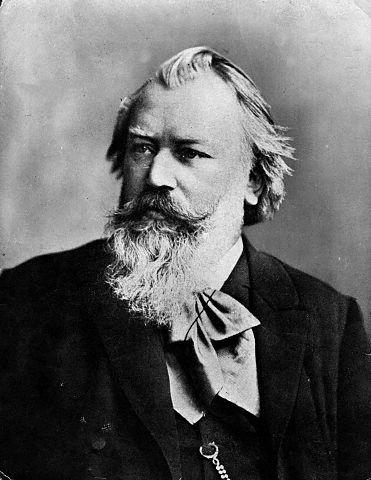You are here
A Symphony Twenty Years in the Making
Johannes Brahms is recognized as one of the great composers of the Romantic period. His career took flight in the early 1850s thanks in no small part to the mentorship of Robert Schumann, one of the leading composers and critics of the day. He and his wife, Clara, a prominent piano soloist and composer in her own right, played significant roles in shepherding the career of young Brahms. Despite this support, including a published article by Robert declaring that Brahms was “the chosen one…destined to give ideal expression to the times,” he lived in the shadow of Ludwig van Beethoven, whose death came just six years before Brahms was born. This fate was suffered by all composers following in the footsteps of the great titan of Classical music, and Brahms described it as “a giant marching behind you." The weight of this great master set Brahms back a good twenty-plus years into his career before he finally completed his first symphony.
Ever the deliberate composer, Brahms insisted on mastering the structures and compositional techniques of the great Baroque and Classical composers, maintaining that one need not abandon the old forms to move forward the ideals of Romanticism. This perfectionistic nature left Brahms toiling over compositions for lengthy periods of time, and his first symphony is a prime example of this; Brahms began sketches for the work as early as the middle 1850s, but it was not premiered until 1876. After initially testing the waters with his first piano concerto, which had many of the hallmarks of a full-scale symphony, and later two serenades and substantial orchestral accompaniments to his choral works, Brahms completed the first movement of the symphony around 1862. He shared it with his trusted advocate and confidante, Clara Schumann, who would not receive the next sampling for another six years, and the full draft another eight years after that.
Symphony No. 1 in C Minor was at last premiered in Karlsruhe in November of 1876, and the initial reception was positive, but the complex work struggled to gain footing in Mannheim, Munich, and Vienna. While respectful of the significance of the symphony, critics bemoaned Brahms’ focus on the difficult, serious, and complex at the expense of the simpler beauty of sweeping melodies. The symphony also gained attention for its similarities to Beethoven’s work, and became known in some circles as “Beethoven’s Tenth.” Regardless, the symphony took hold over time, winning over audiences with its beautiful themes, lyrical charm, and emotional impact, and it remains one of the most popular and beloved symphonies today.
Hear this triumphant and majestic symphony, along with two other Romantic masterworks, at 2:30 p.m. on Sunday, February 3 at Pick-Staiger Concert Hall in Evanston. For tickets and more information, call 847-864-8804 or visit evanstonsymphony.org.
- Mendelssohn
- Ruy Blas Overture
- Schumann
- Piano Concerto in A Minor
Adam Neiman, piano
- Brahms
- Symphony No. 1 in C Minor
